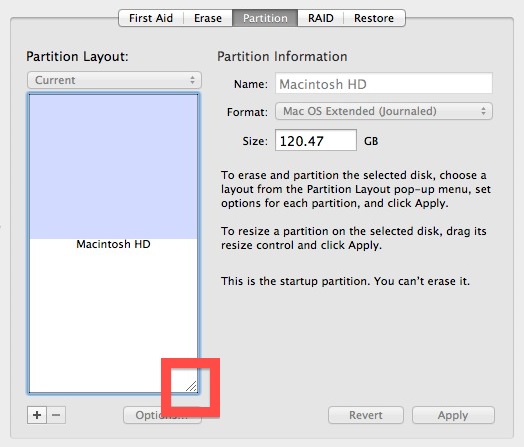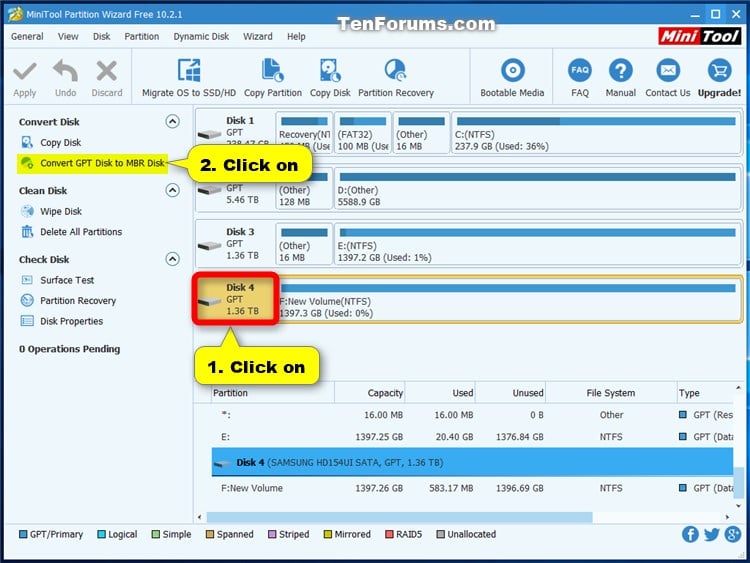BOOTICE is a Flash Drive Partitioning and Boot Sector Manipulation tool created by Pauly. Users might use it to quickly Partition and Format a USB Flash Drive from Windows. USB-FDD, USB-ZIP, and USB-HDD format options are available. Additionally the tool supports the ability to mark a partition active and make it bootable. This tool can also be used to backup, restore, or modify an MBR or PBR and much more. To conclude this flash drive partitioning tool makes for a great addition to any ones collection of Free USB apps.
After you have booted from the macOS Mojave 10.14 beta USB drive, you can perform an installation of macOS Mojave beta, run Disk Utility to format or partition a drive, work with Time Machine, use the Terminal, or perform other common tasks from the bootable volume.
BOOTICE – For Flash Drive Partitioning and MBR Editing
Extracted Size: 136KB
Authors Website: http://www.ipauly.com/
License: Freeware
Download: Download BOOTICE HERE
Alternate Download: You can also get it HERE
Related Portable Software:
- No Related Portable Freeware Applications Found
UPDATED 6/14: It doesn’t matter whether you’re a macOS Sierra or a Windows 10 user, it’s just a matter of time until your device refuses to start, which could happen for many reasons, including file corruption, hardware failure, and buggy update (just to name a few). If the unexpected happens with Apple computer, you can use a macOS bootable USB with the installation media to repair it.
This is one of the main reasons why you should always consider making a macOS bootable USB when your device is working properly. However, if it happens that none of your devices (MacBook, MacBook Air, MacBook Pro, iMac, Mac Pro or Mac Mini) aren’t working when you need them the most, then you can use a PC to rescue your Apple device. You can use a Windows 10, Windows 8.1, or Windows 7 device to quickly create a USB bootable installation media to reinstall macOS Sierra on your Mac.
In this guide, you’ll learn the steps to create a macOS Sierra bootable USB installation on Windows 10, which you can use to reinstall or upgrade Apple’s OS.
Bootable Usb Partition Utility
Things to know before proceeding
Before you dive into this guide, you’ll need a few things, including:

- A broken Mac computer with Mac OS X or macOS Sierra (version 10.12 or later).
- A trial copy of the TransMac software.
- One high quality USB flash drive with 16GB of storage.
- A copy of Apple’s macOS (DMG file).
How to make a macOS bootable USB installation media
Use these steps to create a bootable USB drive with the latest version of macOS:
Download and install TransMac on your Windows PC. This is a paid software, but it gives you a 15-day trial, which is more than enough time. (If this works for you and want to support the developer, you can purchase the full version.)
Connect the USB flash drive you want to use to fix your Mac. If you have any data on the USB, remember to make a backup, as everything on it will be erased.
Right-click TransMac, and select Run as administrator.
If you’re using the trial version, wait 15 seconds, and click Run.
On the left, right-click the USB flash drive, select Format Disk for Mac. You want to do this before creating the bootable media because there is a good chance that the drive was formatted using a Windows device. If this is the case, chances are that it’s using a MBR partition, and the USB drive needs a GPT partition to work on a Mac.
On the warning message, click Yes to format the drive.
Enter a name for the drive, such as “macOS bootable USB” and click OK.
Click Yes to confirm.
If the formatting completed successfully, click OK to continue.
Right-click the USB flash drive, and select Restore with Disk Image.
On the warning message, click Yes to confirm the data on the USB drive will be erased.
Click the browse button on the right, locate the .dmg file with the macOS installation files.
Click Open.
Click OK.
Click Yes to create the macOS USB bootable media.
Once the process completes, you can now insert the USB flash drive on your Mac computer to install, reinstall, or upgrade the operating system to the latest version of macOS, which can be Sierra or later.
How to create a GPT partition on a USB flash drive
If the USB flash drive is not working using TransMac, it could be still a partition problem. In this case, you want to redo the entire process again, but this time use the following steps to use the Diskpart command-line utility on Windows to create the appropriate GPT partition.
Use these steps to create a GPT partition on a removable drive:
Open Start.
Search for Command Prompt, right-click the top result and select the Run as an administrator option.
Type the
diskpartcommand and press Enter.Enter the
list diskcommand to view all drives connected to your computer and press Enter.Type the
select diskcommand followed the number assigned for the USB flash drive (e.g.,select disk 4), and press Enter.Enter the
cleancommand and press Enter.Type the
convert GPTcommand and press Enter.- Enter the
create partition primarycommand and press Enter to complete the process.

Once you formatted the USB flash drive to a GPT partition, you can use the instructions mentioned above to use TransMac to create a bootable media, but this time skip the steps 5 through 9, and continue on step 10.
Mac Bootable Usb Drive
After the process completes, which can take up to an hour, connect the USB flash drive and power on your Mac holding down the Option key, select the USB drive to begin the installation of macOS.
If you’re having problems creating the bootable media, you can get a USB flash drive that comes with macOS Sierra on it with the link mentioned below. (I personally haven’t tried it, but it’s worth the try if nothing works.)